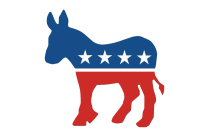The art of picking the perfect Christmas tree
 Some like them tall and thin. Others like them shorter and thick.
Some like them tall and thin. Others like them shorter and thick.
When it comes to picking out the perfect Christmas tree, beauty is in the eye of the beholder.
Don Nesbitt, the owner of Nesbitt Christmas Tree Farm in Clyde, said even the most pitiful looking Christmas tree could be turned into a beautiful Christmas tree with good decorations.
“Every Christmas tree grown can look good if it’s decorated properly. My wife can decorate a Christmas tree that most people wouldn’t have looked twice at on the farm,” he said. “There are more people wanting Charlie Brown trees now — they want ones that aren’t so well groomed. It just goes to show every tree has a possibility.”
From the tree farm owner’s perspective, you can’t go wrong as long as you go with a Fraser fir. Some tree farmers grow several different varieties of trees for Christmas, but others say they simply go for the best of the best.
Darren Nicholson, who works at Boyd Mountain Christmas Tree Farm, said Fraser firs make the best Christmas trees because they have the best shape, the strongest branches to hold ornaments, the best Christmas tree smell and last the longest.
Related Items
“Fraser firs are the Cadillac of Christmas trees,” he said.
The 140-acre farm off Jonathan Creek Road in Waynesville grows nothing but Fraser firs. Whether you’re looking for a 9-foot Griswold Christmas Vacation tree or a 4-foot Charlie Brown Christmas tree, Boyd’s has the Fraser fir you’re looking for somewhere on a steep slope.
Tom Sawyer, owner of Tom Sawyer Christmas Tree Farm in Glenville, agrees that Fraser firs are the best way to go — especially in North Carolina.
“On a scale of one to 10, Fraser firs are No. 1,” he said. “They hold the needles the best, they smell the best and they just look like what you expect a Christmas tree to look like,” he said.
Fraser firs have a long history in North Carolina. The tree was named after John Fraser — a Scottish botanist who explored the Appalachian Mountains of North Carolina in the late 1700s. Mountainsides offer an ideal environment for Fraser firs to thrive since the cold weather and heavy rainfall aids in keeping the needles intact through the holiday season.
“Fraser firs love a steep slope — the steeper the better,” Nicholson said as he maneuvered an ATV slowly down the mountainside at Boyd’s.
North Carolina is the largest producer of Christmas trees, with more than 50 million Fraser firs being grown on 25,000 acres across the state. Fraser firs can reach a maximum height of about 80 feet with a diameter of 1 to 1.5 feet, but the most popular size is 7 to 8 feet tall.
It’s no easy task growing the most popular species of Christmas tree. When you go to cut down a perfect 8-foot Fraser fir, it’s been about 13 years or more in the making. The 18-foot North Carolina Fraser fir displayed in The White House this year began as a seedling on Peaks Farms in 1990. To estimate a tree’s age, Nicholson said, take the height of the tree and add five years.
Not to mention, Frasers require fairly specific conditions to grow. They only grow naturally at elevations above 4,500 feet in the Southern Appalachian Mountains.
A lot of time goes into caring for these trees throughout the year just so people can enjoy them for one month of the year.













